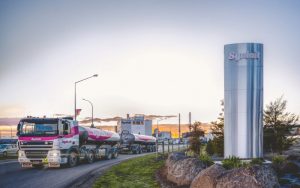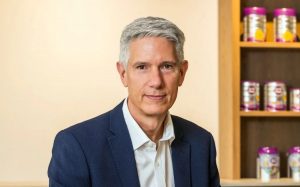
In politics, dismissals and departures take place in the full public glare with humiliation writ large for the vanquished.
Not so in business. No-one is ever punted, unless of course you’ve just been outed as running a bank that has broken the law 23 million times (not counting the 6 million transgressions outside the statute of limitations) over the past six years.
Even then, the departure generally is “by mutual agreement” as our vanquished hero rides off into the sunset, saddlebags loaded with loot.
Usually, the excuse given for an early departure is that the chief has decided to “spend more time with his family”. It’s the excuse that has become a well-worn euphemism and, in the case of male senior executives, something of a joke.
Last week, however, it was trotted out as the primary reason for Jayne Hrdlicka’s sudden exit from A2 Milk.
As one of only 12 female leaders of a top 200 Australian company, her departure attracted far more attention than usual.
Battle for message control and media dominance
In the official statement, the highly regarded Ms Hrdlicka confessed the job of running a New Zealand company based in Australia with key markets in the US and China “required more travel than I had anticipated when I joined the company”.
“The board and I agreed that this next phase is going to be too difficult to manage alongside my other commitments while also managing the health and wellness priorities of my family and me.”
If there’s one thing investors hate, particularly large institutions, it’s sudden and unexpected change. While health and family may have been a factor, clearly it wasn’t the only issue.
Almost immediately, questions were raised as to what exactly had transpired amid speculation of ongoing tension between the new boss and the board.
Given the statement to the Australian Securities Exchange began by announcing that Ms Hrdlicka had “agreed to step down from her role”, it was obvious something other than travel was the issue. After all, she previously ran the Qantas frequent flyer program and Jetstar.
Then there was the revelation she would remain as head of Tennis Australia.
It certainly wasn’t entirely about performance. When she joined the $11 billion company, the share price was sitting just above $10 a share. When she departed last week, it was well north of $14.
The share price, however, has been extremely volatile. In August, it shot through $17 before plunging below $12 in October as investors worried about the company’s aggressive expansion. It seems the board was concerned too.
While she was hired to shake things up and implement change, it seems some directors weren’t quite ready for the cracking pace she set and the disruptive effect on senior management.
In the days after the abrupt resignation, both sides fought for control of the spin.
It was reported directors weren’t happy she’d sold $4 million worth of shares within months of joining the group, even though other directors and senior managers did the same. Among other things, they were displeased with the $19 million in consultancy fees she forked out to her former employer, Bain and Co.
No-one came out a winner.
Sales, spin and dairy
When it comes to business, marketing and spin are paramount. You have to sell the idea that your product is unique; that it’s better than anything else out there.
That’s no easy task, especially when you’re dealing with a commodity like milk.
That all changed after the 2008 milk contamination scare in China, when 300,000 babies fell victim to melamine poisoning. Panicked Chinese consumers turned their focus towards Australasia. Infant formula began running off the supermarket shelves.
One of the biggest beneficiaries was Bellamy’s, a tiny Tasmanian-based outfit that sold itself and its infant formula as Tassie clean, green and organic.
Forget that for years, it was sourcing most of its dairy product from Austria and other parts of Europe and that, by the time it listed on the ASX, its production facilities had shifted to Victoria.
Chinese consumers bought the story and the product, so much so that a Chinese Government-owned dairy corporation, China Mengniu Dairy, recently bought the company for $1.5 billion.
It since has paid a further $600 million to add Dairy Farmers, Pura and Masters to its milk portfolio.
A1 and A2 — is there any difference?
Those running A2 have been no slouches when it comes to marketing.
Former boss Geoff Babidge, who ran the group for eight years, recruited Ms Hrdlicka as his replacement and now has been brought back in to steady the ship.
He had originally managed to catapult the company into the stratosphere with an extraordinarily clever campaign.
It was revealed that, finally, consumers could buy milk that contained A2 casein protein. It had found a way of ridding its product of the A1 protein.
Why does this matter? The truth is, it probably doesn’t.
There have been claims the A1 protein can cause autism, diabetes, heart disease and a host of other ailments including Sudden Infant Death Syndrome. But no conclusive evidence has ever been produced to support these claims.
About the only thing we know for certain is that regular milk — which contains both A1 and A2 protein — may cause digestive problems in some people.
To be fair, you won’t find any outrageous claims in A2’s marketing or even any reference to adverse health effects. It’s far more subtle.
It is adamant that you won’t find any A1 protein in its milk, which automatically suggests something must be wrong with A1 protein. But about the closest it gets is noting that “certain people … may experience benefits when they switch to A2 Milk”.
The company also assures us that no genetic modifications have gone into its breeding program; that its product is natural.
That’s because Southern European breeds from the Channel Islands and France like Jersey, Guernsey and Limousin, produce milk high in A2 protein while northern European breeds like Friesian and Holstein produce milk high in A1.
Traditionally, Friesian and Holstein have been the backbone of the local whole milk market as they produce higher volumes of milk with lower fat. Jersey and Guernsey cows have been favoured by those producing cheese and butter because they have lower volumes but higher fat.
Having had the arduous task many moons ago of milking 96 Friesian cows every morning and afternoon, your columnist has hit upon a brilliant campaign for a unique, new type of milk.
How about this: “A1 Milk. Why settle for second best?”

























